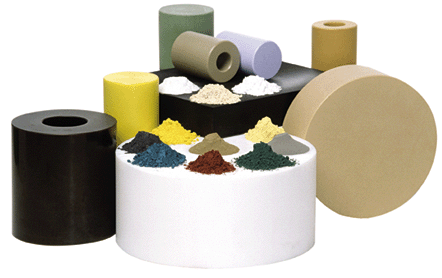PTFE has a unique combination of properties that make it ideal for use in sealing technology. One of its most notable characteristics is its ability to withstand extremely high and low temperatures. PTFE can operate in temperatures ranging from as low as -200°C to as high as 260°C, making it an excellent choice for applications where sealing performance needs to be maintained at extreme temperatures.

Another significant advantage of PTFE is its chemical resistance. It is highly resistant to various chemicals, including acids, alkalis, and organic solvents. This makes it an excellent choice for use in chemical processing plants or other facilities where exposure to harsh chemicals is common.
PTFE also has excellent non-stick properties, which make it ideal for use in applications where adhesion could compromise the effectiveness of the seal. Its low coefficient of friction means that even under heavy loads or with repeated cycles of movement, PTFE will not experience significant wear or degradation.
In addition to these properties, it has outstanding electrical insulation characteristics and acts as a barrier against moisture and dust.
Manufacturing PFE Gaskets
Pure PTFE gaskets are produced by molding directly from suspended material or cutting (turning) from PTFE sheets (rods). Molding plates have uneven density and poor flexibility while turning plates have a relatively uniform density. Still, their material is curved due to the influence of the processing technology, which is not conducive to installation and use.
Modified PTFE gaskets add a certain proportion of functional materials, such as glass fiber or graphite powder, during production. The resulting gasket provides improved strength and durability compared with pure PTFE gaskets while maintaining this advanced material’s desirable properties.
Despite its many advantages, however, some limitations are associated with using PTFE in sealing applications. For example:
- It can be difficult to achieve consistent compression when using pure PTFE gaskets due to their poor flexibility
- PTFE can be prone to creep under sustained pressure, which can result in a loss of sealing performance over time
- PTFE is unsuitable for high-pressure applications as it has low tensile strength and may deform or fail under high loads.
Applications for PTFE
Despite these limitations, PTFE remains one of the most advanced materials available in sealing technology. Its unique combination of properties makes it ideal for use in various applications where reliable sealing is essential.
One potential application area where PTFE could increase use is the automotive industry. As electric vehicles become more prevalent, there will be an increased demand for seals that withstand harsh operating conditions. Its excellent temperature resistance, chemical resistance, and non-stick properties make it an ideal choice for use in battery enclosures and other critical components.
Another potential application area is within the food processing industry. Many food products are highly acidic or alkaline, which can cause traditional seals to degrade over time. PTFE’s chemical resistance makes it an excellent choice for acidic or alkaline foods. At the same time, its non-stick properties mean that any residue left on the seal after cleaning can easily be removed.
In conclusion, Polytetrafluoroethylene (PTFE) has many advanced properties that make it ideal for use in sealing technology. Its ability to withstand extreme temperatures while maintaining effective sealing performance sets it apart from other materials commonly used in this field. While some limitations are associated with using the material in certain applications, such as those involving high-pressure loads, its unique combination of properties means it remains one of the most important materials currently available. Over time, we may see even greater advances made with this remarkable material with continued research and development into new formulations and manufacturing techniques.
